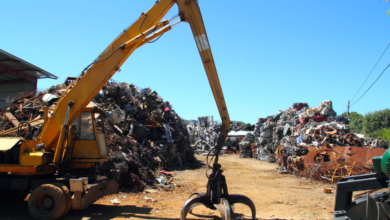Best Practices for Using Self-Emptying Robot Vacuums in Large Homes

Homeowners with large living spaces often find keeping their floors clean a challenging task. Time-consuming chores can become more manageable with the help of modern technology, specifically self emptying robot vacuums. These devices combine autonomous cleaning capabilities with the convenience of minimal maintenance, making them an ideal choice for expansive homes. By properly selecting, setting up, maintaining, and integrating these robot vacuums, you can optimize your home’s cleanliness and enjoy a consistently tidy living environment.
Selecting the Right Robot Vacuum for Large Spaces
When choosing a self-emptying robot vacuum for extensive areas, it’s essential to consider specific features that ensure efficient and thorough cleaning.
Navigation and Mapping Capabilities
Effective navigation and advanced mapping are essential for a robot vacuum to efficiently clean large areas without missing spots. Opt for models with smart mapping technology, like LiDAR or camera-based systems, which create precise floor plans for systematic cleaning. These technologies enable the vacuum to detect obstacles, avoid getting stuck, and navigate seamlessly across different floor types. With intelligent mapping, the device follows an optimized cleaning path, ensuring thorough and efficient coverage.
Battery Life and Charging Efficiency
Long battery life is essential for robot vacuums in large homes, ensuring uninterrupted cleaning sessions. Opt for a model with a high-capacity battery that can sustain extended operation. Some advanced robots feature automatic docking, returning to their charging base when power runs low and resuming cleaning once recharged. This smart functionality eliminates the need for manual intervention, keeping your floors consistently clean without disruption, even in spacious areas.
See also: Open-Ear Earbuds: A New Era in Audio Technology
Optimizing Your Home for Efficient Cleaning
Preparing your living space to accommodate a robot vacuum can significantly improve its cleaning performance.
Decluttering and Preparing Cleaning Zones
Keeping your floors free of clutter helps the robot vacuum work efficiently. Ensure small items, cables, and other obstructions are cleared from the floor to prevent the device from getting stuck. Additionally, organizing your space into cleaning zones can optimize the vacuum’s performance. Dividing larger rooms or areas into manageable sections allows the robot to focus on one area at a time for a more thorough clean.
Setting Up Virtual Boundaries and No-Go Zones
Most modern robot vacuums come with virtual boundary and no-go zone features, helping you control where they clean. These features let you define restricted areas, such as around fragile furniture, pet feeding stations, or high-traffic zones. Using the mobile app, you can easily set up and adjust these boundaries, ensuring your vacuum navigates efficiently while avoiding obstacles. This smart functionality enhances cleaning precision and protects sensitive areas in your home.
Regularly Maintaining and Upkeeping
Regular maintenance is key to keeping your self-emptying robot vacuum functioning optimally.
Cleaning Brushes and Filters
Routinely check and clean your robot vacuum’s brushes, filters, and dustbin to prevent blockages and maintain strong suction. Remove tangled hair and debris from the brushes to prevent wear, wash or replace filters regularly to maintain air quality, and empty the dustbin after each use to avoid clogs. Additionally, inspect sensors and wheels for dirt buildup. Proper maintenance ensures optimal performance, enhances cleaning efficiency, and extends the vacuum’s lifespan for long-term reliability.
Ensuring Proper Function of the Self-Emptying Base
The self-emptying base is a valuable feature that minimizes maintenance by automatically disposing of collected debris. To ensure it functions properly, regularly empty the dustbin and inspect for blockages. Clean the base’s sensors and charging connections to maintain efficiency. Additionally, wipe down the docking station and check for dust buildup that could affect performance. Routine upkeep prevents malfunctions, keeping the self-emptying system running smoothly and reducing the need for manual emptying.

Integrating with Smart Home Systems
Enhancing the functionality of your robot vacuum through smart home integration can simplify controlling and scheduling cleanings.
Syncing with Voice Assistants and Mobile Apps
Many self-emptying robot vacuums are compatible with voice assistants like Amazon Alexa or Google Assistant. Integrating the vacuum with these systems allows you to start, stop, or direct the device using voice commands. Additionally, utilizing the manufacturer’s mobile app provides convenient remote control capabilities, enabling you to manage cleaning sessions even when you’re not at home.
Scheduling and Customizing Cleaning Sessions
Designing a cleaning schedule that fits your daily routine can ensure your home remains clean with minimal effort on your part. Use the mobile app to set regular cleaning times, and customize sessions based on your home’s specific needs. Adjust the cleaning frequency for high-traffic areas and set preferences for how the vacuum should handle various floor types and debris levels.
Conclusion
Embracing the technology of self-emptying robot vacuums can significantly ease the burden of maintaining a clean large home. By selecting a suitable model, optimizing your home for efficient cleaning, performing regular maintenance, and integrating the vacuum with smart home systems, you can achieve a consistently tidy living environment. Following these best practices ensures that your robot vacuum works efficiently, giving you more time to enjoy other activities while your home stays spotless.







